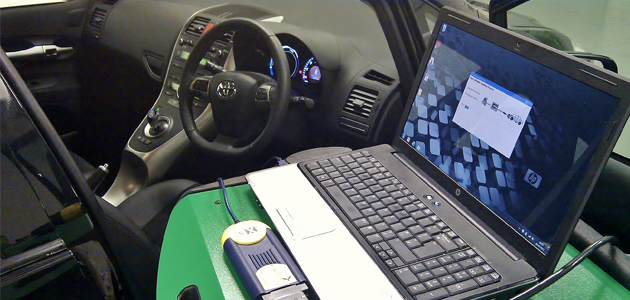
The structure of vehicles have changed dramatically over the past few years, with little or no information passed on to the car owner to help them understand exactly how their vehicle works. The easiest way to start is by using basic terms.

Cars today are like an office on wheels. In an office there are many computers that are connected together in a network. The magic then starts as they talk to each other – ensuring there is no longer the need to pass memos from desk-to-desk. To understand vehicle systems on a car, it is important to look at them in the same way as the aforementioned computers in the office, with the CAN BUS line performing the function of the network that links ECU-to-ECU. Each of the systems (desks) need to get periodic updates, in the same way that Microsoft will provide updates for your computer.
It is normal practice that car manufacturers update the software in vehicle ECU’s rather than making expensive recalls. Faults or adjustments are made (online), though because many of these are done under warranty, word of these adjustments is not brought to the attention of the aftermarket garages. Aftermarket diagnostic tools work in a different way, as generally there is a database with lists of commands to perform one function or another. This database (coverage list) is purely at the whim of that particular diagnostic company – something which is fine for general servicing and service repairs.
‘Pure’ diagnostics
This said however, it is important not to mix this up with ‘pure’ diagnostics or programming. When using an ‘aftermarket-type’ diagnostic tool you are given the choice of the units (Engine, ABS, Airbag etc) and once selected you are able to read fault codes, live data, actuations, register and/or ECU identification. This is all good stuff but you
really should know the answers before you start working with this type of tool.
The alternative – ‘Pass-Thru’ diagnostics – is a proven way to work on 33 makes of vehicle through use of technical bulletins, wiring diagrams, diagnostics, programming and a technical help line from the manufacturer. Some people have seen and used it before but there are also many that are still unfamiliar with the concept. This is understandable as it is only recently that manufacturers have opened specific European sites – rather than connecting through a US site – but this has proved difficult, as some manufacturers are yet to convert.
Pass-Thru works by subscription on a daily, weekly, monthly or yearly basis (you choose) and the contract is between the technician and the manufacturer each time they subscribe. Coverage is 100% and there are no periodic updates; the subscription cost is the main expense to the user, but this should be negigible if the cost is passed on to the customer.
It is strongly recommended that training is undertaken to use and get the best out of Pass-Thru diagnostics and, as such, ICT Workshop Solutions runs specific training courses to help delegates understand and master Pass-Thru testing/programming.









